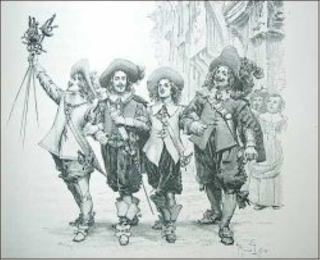 Stamp collecting or Philately can be a rewarding and educative hobby. Postal Stamps from different countries of the world come with beautiful themes and images. Each postal stamps tells a story. Some commemorate a leader, other stamps celebrate the founding of an institution such as a school or college while others celebrate a nation's wildlife. Collecting stamps and learning about the theme they are based on gives a great deal of knowledge about people, historical incidents, places. etc
Stamp collecting or Philately can be a rewarding and educative hobby. Postal Stamps from different countries of the world come with beautiful themes and images. Each postal stamps tells a story. Some commemorate a leader, other stamps celebrate the founding of an institution such as a school or college while others celebrate a nation's wildlife. Collecting stamps and learning about the theme they are based on gives a great deal of knowledge about people, historical incidents, places. etc
The term philately is derived from two Greek words philos, meaning love and atelia, which means without tax, an apparent reference to the stamp which enabled a letter or a parcel to be sent to an address a great distance away without being levied en route. Today philatelists are found throughout the world coming from diverse occupations such as doctors, lawyers, teachers, policemen and many students
A brief history of Stamps
The idea of stamps was first conceived by Rowland Hill, who suggested stamps as part of his proposal to reform the British Postal System. The first stamp was released in 1840. Nicknamed the Penny Black, it contained an elegant engraving of the then reigning British Monarch, Queen Victoria. The introduction of stamps simplified the postal system and made sending and receiving letters much easier and simpler.
Following Britain, other countries too released their own stamps. Today, almost all countries issue their own postage stamps with the name of the country and the monetary denomination printed in the stamp. Incidentally, stamps from Great Britain do not mention the name of the country.
Starting your Hobby
Philately as a hobby is relatively inexpensive to start. You can begin with collecting used stamps from mail you receive from friends. You can also ask your friends and relatives for stamps they receive. Besides, you can also buy stamps from dealers. This is a faster way to develop a collection. It is good if you share your interest in stamps with your friends. It helps you to exchange stamps with them, helping your collection to be more diverse.
Setting up your collection
Most Philatelists maintain their collection in stamp albums. You can either use hinge based albums where stamps are attached to the pages of the albums by means of special adhesive hinges. Alternatively, strip albums with special slots where the stamps can be inserted are also available. It is good to handle stamps with special tweezers to avoid damaging the delicate edges during handling.
Stamp collections can be thematic i.e. based on a particular theme such as sports, railways, birds and so on. You can also have collections based on countries.
Mint Stamps and First Day Covers
Mint stamps are stamps which are purchased from the Postal Department through the the local post office or an official philatelic agency. These stamps are fresh unlike used stamps in the collection.
First Day Covers are issued by the Post office on the day of the stamps release. To increase visual appeal a special cancellation or logo is applied on the envelope.
Philatelic societies and bureaux
Joining a philatelic society is a great way of developing your hobby. Philatelic societies provide numerous resources for the stamp collector such as a stamp catalogues, newletters, information on upcoming stamp releases and above all the opportunity to interact with fellow collectors.
images courtesy: www.seasidebs.com
Related links:
http://francobollidelmondo.blogspot.com/2008/10/history-of-philately.html Read More
 When Santa has finished with dispensing his goodies to the world’s children, where does he go back to? Where does he live? Well, according to the people of Finland, Santa lives in the northern part of their country, known as Lapland. He lives in a place called Korvatunturi.
When Santa has finished with dispensing his goodies to the world’s children, where does he go back to? Where does he live? Well, according to the people of Finland, Santa lives in the northern part of their country, known as Lapland. He lives in a place called Korvatunturi.  The Dugong is an aquatic mammal that lives in the sea, usually in shallow areas such as channels, bays, etc.
The Dugong is an aquatic mammal that lives in the sea, usually in shallow areas such as channels, bays, etc. 

 "The Three Musketeers" is a novel by the noted French Playwright and novelist, Alexander Dumas. Set in the backdrop of the French political scene before the French revolution, the novel details the adventures of a young man,
"The Three Musketeers" is a novel by the noted French Playwright and novelist, Alexander Dumas. Set in the backdrop of the French political scene before the French revolution, the novel details the adventures of a young man, 